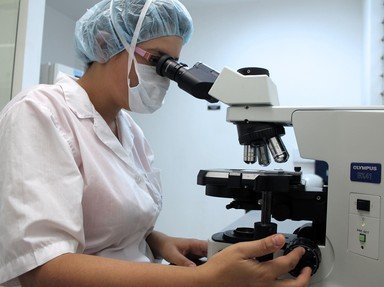Quiz Answer Key and Fun Facts
1. Plant and animal cells contain different organelles. Which of the following is *not* found in animal cells?
2. The part of the cell cycle where the cell nucleus divides is called mitosis. What is the name of the phase of in which division of the cytoplasm occurs?
3. Cellular respiration is the process in which cells release energy. In which organelle does it occur?
4. Cell division is controlled by the centrioles. Which of the following is a disease of the cell cycle in which cells have lost control of division?
5. Cells move things in and out through the cell membrane. Diffusion occurs when these objects - molecules - move from an area where there are more of them to an area where there are fewer of them. What is diffusion of water through a cell membrane called?
6. Glycolysis is anaerobic, which means it does not require oxygen. It occurs in the cytoplasm and produces two molecules of ATP energy. If oxygen is present, which of the following processes that consists of two stages occurs in the mitochondria and produces 36 more ATP molecules?
7. Photosynthesis and cellular respiration are opposite cell processes. One puts this compound into the atmosphere and the other one takes it out. Which compound fits this description?
8. Plants need more support than animals to keep their shape. Which of the following is found outside of the cell membrane of plant cells to perform this function?
9. Cells contain DNA which contains the instructions that cells need to operate and divide. All cells of the same type have identical DNA. DNA is located in the nucleus inside what structure?
10. During the cell cycle chromosomes duplicate so that each cell has the same amount of DNA after cell division. When the chromosomes duplicate, they form two identical structures attached in the middle. What are these two structures (not the attachment point) called?
Source: Author
Computer100
This quiz was reviewed by FunTrivia editor
WesleyCrusher before going online.
Any errors found in FunTrivia content are routinely corrected through our feedback system.


